A01 |
Lettered and Inscribed. Inscriptions in Urban Space in the Greco-Roman Period and Middle Ages |
|
| UP2
|
Late Antique Culture(s) of Inscriptions in the Imperium Romanum – on the Changes in Communication Structures and Commemorative Media at the End of Antiquity |
former staff members
| Teilprojektleiter | Prof. Dr. Stephan Westphalen |
| Teilprojektleiter | Prof. Dr. Christian Witschel |
| akademischer Mitarbeiter | Dr. Stefan Ardeleanu |
| akademischer Mitarbeiter | Jon Cosme Cubas Díaz |
| akademische Mitarbeiterin | Solvejg Langer |
| akademische Mitarbeiterin | Katharina Bolle |
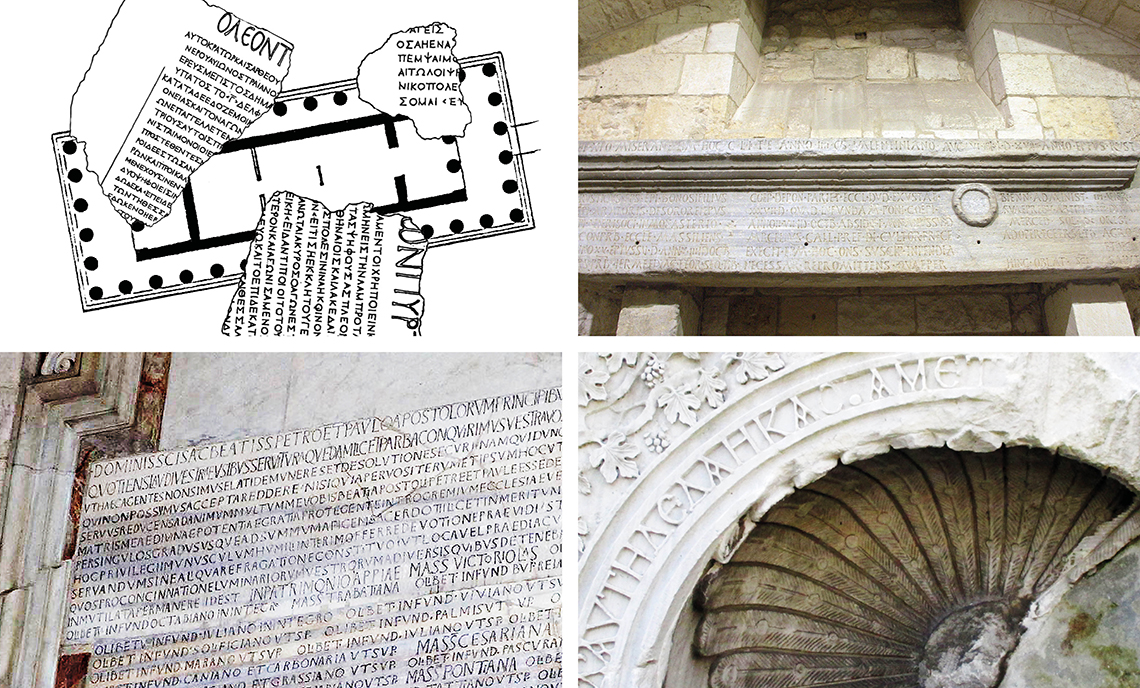
UP 2a: Platzierung, Wahrnehmung und Behandlung von beschrifteten Artefakten in funerären Kontexten des spätantiken Africa
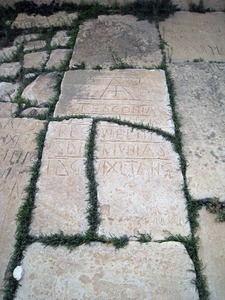 Nordafrika ist diejenige Region im Westen des römischen Reiches, die während der Spätantike durch die am stärksten ausgeprägte Inschriftenkultur – sowohl in quantitativer wie auch in qualitativer Hinsicht – charakterisiert war. Besonders Grabinschriften und in Gräbern assoziierte Schriftzeugnisse, die seit dem späten 3. Jh. n. Chr. einen dominant (aber nicht ausschließlich) christlich geprägten Charakter aufwiesen, haben sich hier in vergleichsloser Dichte erhalten. Der Forschungsstand ist jedoch uneinheitlich. Während die ersten Corpora des 19. Jhs. vornehmlich auf eine deskriptive "Sammlung" christlicher Inschriften und auf deren Inhalt abzielten, bildete sich im Laufe des 20. Jhs. die Tendenz lokaler Einzelstudien aus, die das epigraphische Dossier einzelner Orte in den Blick nahmen. Diese Tendenz trägt in erster Linie der enormen Heterogenität des Befunds Rechnung, denn sowohl im formalen Aufbau, als auch in der materiellen Gestaltung, im Schriftbild und in der Kombination mit ikonographischen Elementen zeigt sich ein von Ort zu Ort höchst unterschiedliches Bild des Umgangs mit Schrift im Grabwesen.
Nordafrika ist diejenige Region im Westen des römischen Reiches, die während der Spätantike durch die am stärksten ausgeprägte Inschriftenkultur – sowohl in quantitativer wie auch in qualitativer Hinsicht – charakterisiert war. Besonders Grabinschriften und in Gräbern assoziierte Schriftzeugnisse, die seit dem späten 3. Jh. n. Chr. einen dominant (aber nicht ausschließlich) christlich geprägten Charakter aufwiesen, haben sich hier in vergleichsloser Dichte erhalten. Der Forschungsstand ist jedoch uneinheitlich. Während die ersten Corpora des 19. Jhs. vornehmlich auf eine deskriptive "Sammlung" christlicher Inschriften und auf deren Inhalt abzielten, bildete sich im Laufe des 20. Jhs. die Tendenz lokaler Einzelstudien aus, die das epigraphische Dossier einzelner Orte in den Blick nahmen. Diese Tendenz trägt in erster Linie der enormen Heterogenität des Befunds Rechnung, denn sowohl im formalen Aufbau, als auch in der materiellen Gestaltung, im Schriftbild und in der Kombination mit ikonographischen Elementen zeigt sich ein von Ort zu Ort höchst unterschiedliches Bild des Umgangs mit Schrift im Grabwesen.
Das Postdocprojekt sieht vor, die Rolle von Schrift im Grabkontext Nordafrikas der Zeit zwischen dem mittleren 3. und 7. Jh. n. Chr. mit den SFB-relevanten Fragestellungen neu zu bestimmen. In welchen Kontexten und v. a. wie wurde Schrift im Grabwesen eingesetzt und präsentiert? Wie sollte Schrift in ihrem ursprünglichen topologischen Kontext wirken und gibt es Hinweise für die Wahrnehmung solcher Inschriften? In welchem Maße war der Einsatz von Schrift in soziale Praktiken eingebettet? Dabei kommt v. a. Gruppen von Grabinschriften mit gut dokumentierten archäologischen Kontexten in Kirchen und Nekropolen eine besondere Bedeutung zu. Selten beachtete topographische Faktoren (Fundgruppen, isolierte Gräber, Bestattungen intra muros) und ikonographische Aspekte (figürliche, ornamentale Gestaltung von Grabmosaiken und Steininschriften) sollen neu diskutiert werden. Inschriftträger und -material (Stelen, Platten, Architektur, Spolien, Mosaiken, beschriftete Objekte aus Blei, Ton etc.), farbige Gestaltung, Schriftbild, Position in Kirchen/Nekropolen/Siedlungen werden also im Gegensatz zu den bisherigen epigraphischen „Sammlungen“ wichtige Untersuchungsfelder ausmachen und sollen durch Autopsie vor Ort re-evaluiert werden. Eine zentrale Rolle kommt dabei der Einbettung der Inschriften in die recht häufig noch rekonstruierbaren rituellen-sozialen Kontexte zu. In vielen Sepulkralbefunden Africas finden sich nämlich Hinweise für kultisch-kommemorative Handlungen an schriftlich gekennzeichneten Gräbern, die z. T. nur bestimmten Mitgliedern der Gesellschaft zugänglich oder aber in gruppenrelevante liturgische Praktiken eingebunden waren. Hierfür sprechen die häufig in der Nähe dokumentierten Funerärmensae, Abschrankungen privilegierter Kirchenbestattungen, Wasservorrichtungen, der in Nordafrika besonders ausgeprägte Märtyrerkult und die daraus resultierende Bestattung ad sanctos, Gräber in und um Baptisterien, eingefriedete Grabbezirke oder exquisite Grabbeigaben. Beifunde wie liturgisches Gerät, Teller, Trinkschalen, Knochenreste oder Lampen lassen auf öffentliche und private Speisungen an Festtagen schließen.
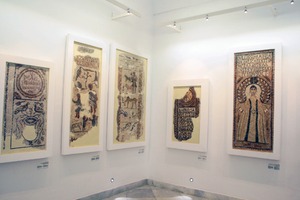 In einem ersten mikroanalytischen Ansatz sollen drei Orte als Fallbeispiele in ihrem gesamten funerärepigraphischen Befund der Spätantike aufgearbeitet werden. Eine vorläufige Auswahl sieht hierfür Lokalstudien vor, die bisher noch keine systematische Erschließung ihres "epitaphic habit" und der zugehörigen Grabkontexte erfahren haben. Neben diesen Fallstudien soll in einer zweiten Projektphase eine Makroanalyse entstehen, die die Grundlinien des sepulkralepigraphischen Panorama unter Berücksichtigung der variantenreichen "mortuary landscape" (Grabtypen, Grabriten, Grabbeigaben, Jenseitsvorstellungen) im spätantiken Nordafrika nachzeichnet. Das parallel zu den zahlreichen Grabinschriften laufende Phänomen des hohen Prozentsatzes anepigraphischer Gräber wirft z. B. die Frage auf, in welchen sozio-ökonomischen Kontexten überhaupt auf Schriftlichkeit am Grab zurückgegriffen wurde. Hierbei sollen neue archäologisch-epigraphische Erkenntnisse zu Datierungsmöglichkeiten von Grabkomplexen und -inschriften in die Debatte eingebracht werden, denn die chronologische Einordnung von Epitaphen stellt noch immer – gerade für die Umbruchszeit des späten 3./ frühen 4. Jh. n. Chr. – eines der zentralen Probleme der Erforschung des spätantiken Nordafrika dar. Mit diesem kombinierten Ansatz soll ein differenziertes Verständnis der spätantiken Inschriftenlandschaft Nordafrikas, aber auch die besondere Stellung dieses Gebietes für die epigraphischen Kulturen der westmediterranen Welt am Ende der Antike herausgearbeitet werden.
In einem ersten mikroanalytischen Ansatz sollen drei Orte als Fallbeispiele in ihrem gesamten funerärepigraphischen Befund der Spätantike aufgearbeitet werden. Eine vorläufige Auswahl sieht hierfür Lokalstudien vor, die bisher noch keine systematische Erschließung ihres "epitaphic habit" und der zugehörigen Grabkontexte erfahren haben. Neben diesen Fallstudien soll in einer zweiten Projektphase eine Makroanalyse entstehen, die die Grundlinien des sepulkralepigraphischen Panorama unter Berücksichtigung der variantenreichen "mortuary landscape" (Grabtypen, Grabriten, Grabbeigaben, Jenseitsvorstellungen) im spätantiken Nordafrika nachzeichnet. Das parallel zu den zahlreichen Grabinschriften laufende Phänomen des hohen Prozentsatzes anepigraphischer Gräber wirft z. B. die Frage auf, in welchen sozio-ökonomischen Kontexten überhaupt auf Schriftlichkeit am Grab zurückgegriffen wurde. Hierbei sollen neue archäologisch-epigraphische Erkenntnisse zu Datierungsmöglichkeiten von Grabkomplexen und -inschriften in die Debatte eingebracht werden, denn die chronologische Einordnung von Epitaphen stellt noch immer – gerade für die Umbruchszeit des späten 3./ frühen 4. Jh. n. Chr. – eines der zentralen Probleme der Erforschung des spätantiken Nordafrika dar. Mit diesem kombinierten Ansatz soll ein differenziertes Verständnis der spätantiken Inschriftenlandschaft Nordafrikas, aber auch die besondere Stellung dieses Gebietes für die epigraphischen Kulturen der westmediterranen Welt am Ende der Antike herausgearbeitet werden.
UP2b: Materialität und Präsenz beschrifteter Artefakte in den Nekropolen des Rauen Kilikiens
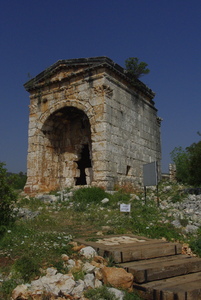 Die Auseinandersetzung der Kilikier mit Tod und Jenseits prägt heute noch die Topographie dieser antiken Kulturlandschaft der Südtürkei, die im Osten an Syrien, im Westen an Pamphylien angrenzt. Davon zeugen zahlreiche erhaltene Grabstätten, die den Reichtum, die Vielfalt und Bedeutung dieser Räume und Denkmäler für ihre Gesellschaft eindrucksvoll präsentieren. Wie viele andere Landschaften des östlichen Mittelmeerraumes wurde auch Kilikien Ziel mehrerer Forschungsreisen im 19. Jh. Die daraus entstandenen Forschungsberichte stellten Kilikien zum ersten Mal der Fachgemeinschaft vor. Ende der zwanziger Jahre des 20. Jh. sollten dann die ersten umfassenden Arbeiten entstehen, die u.a. die Inschriften der Küstenstädte des Rauen Kilikiens aufnahmen oder sich mit der Sakralarchitektur einiger Siedlungen befassten. Erst in den sechziger Jahren folgte eine erste Untersuchung ausgewählter Nekropolen durch Alois Machatschek. Abgesehen von kleineren Studien und knappen Siedlungsbeschreibungen blieben weitere eingehende Forschungen in den folgenden Jahren aus.
Die Auseinandersetzung der Kilikier mit Tod und Jenseits prägt heute noch die Topographie dieser antiken Kulturlandschaft der Südtürkei, die im Osten an Syrien, im Westen an Pamphylien angrenzt. Davon zeugen zahlreiche erhaltene Grabstätten, die den Reichtum, die Vielfalt und Bedeutung dieser Räume und Denkmäler für ihre Gesellschaft eindrucksvoll präsentieren. Wie viele andere Landschaften des östlichen Mittelmeerraumes wurde auch Kilikien Ziel mehrerer Forschungsreisen im 19. Jh. Die daraus entstandenen Forschungsberichte stellten Kilikien zum ersten Mal der Fachgemeinschaft vor. Ende der zwanziger Jahre des 20. Jh. sollten dann die ersten umfassenden Arbeiten entstehen, die u.a. die Inschriften der Küstenstädte des Rauen Kilikiens aufnahmen oder sich mit der Sakralarchitektur einiger Siedlungen befassten. Erst in den sechziger Jahren folgte eine erste Untersuchung ausgewählter Nekropolen durch Alois Machatschek. Abgesehen von kleineren Studien und knappen Siedlungsbeschreibungen blieben weitere eingehende Forschungen in den folgenden Jahren aus.
So musste sich die Spätantike-Forschung der letzten beiden Jahrzehnte grundlegenden Aufgaben stellen, denn sie fand eine Region mit ausgesprochen gut erhaltenen Befunden vor, der im Wissenschaftsdiskurs zwar stets großes Potenzial zugesprochen wurde, die aber weitgehend noch ein großes Fragenzeichen darstellte – mit Ausnahme der Sakralarchitektur und der Epigraphik. Dabei waren epigraphische Befunde traditionellerweise von den archäologischen Befunden losgelöst untersucht worden und bei der Sakralarchitektur waren kaum die Kontexte eingebunden worden. Erfreulicherweise haben in den vergangenen Jahren diverse Feldforschungsprojekte das Bild Kilikiens so bereichern können, dass erste komparative Studien zwischenzeitlich möglich geworden sind.
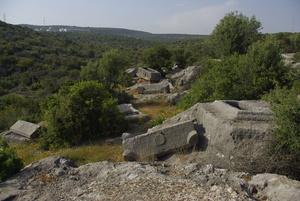 An dieser Stelle soll dieses Projekt anknüpfen und durch die Auseinandersetzung mit funerären Räumen von Siedlungen mit unterschiedlichem Charakter ein möglichst differenziertes Bild des Sepulkralwesens im Rauen Kilikien erarbeiten. Thematisch ist die Frage nach dem Wandel der Bestattungsformen in der Spätantike zentral. Darunter sind sowohl die Artefakte als Einzelfunde und deren Einbettung in Räume, als auch ihre siedlungsarchäologische Stellung zu verstehen. Dabei soll auch die Rolle der Grabdenkmäler als Kommunikationsmittel bzw. -plattform analysiert und ihre Stellung als Räume zwischen Diesseits und Jenseits untersucht werden. In diesem Rahmen soll gezielt der Wandel der Nutzung von Schrift im Zusammenhang mit den archäologischen Befunden beleuchtet werden. Ziel ist es jedoch nicht, eine Typologie der Artefakte und siedlungsarchäologische Merkmale zu präsentieren bzw. einen Wandel des epigraphic habit zu skizzieren, sondern vielmehr, einen mortuary landscape auszuarbeiten, der archäologische und epigraphische Befunde berücksichtigt und verbindet. Dadurch soll das regionale Sepulkralwesen Rauen Kilikien in seinem Facettenreichtum deutlich gemacht werden.
An dieser Stelle soll dieses Projekt anknüpfen und durch die Auseinandersetzung mit funerären Räumen von Siedlungen mit unterschiedlichem Charakter ein möglichst differenziertes Bild des Sepulkralwesens im Rauen Kilikien erarbeiten. Thematisch ist die Frage nach dem Wandel der Bestattungsformen in der Spätantike zentral. Darunter sind sowohl die Artefakte als Einzelfunde und deren Einbettung in Räume, als auch ihre siedlungsarchäologische Stellung zu verstehen. Dabei soll auch die Rolle der Grabdenkmäler als Kommunikationsmittel bzw. -plattform analysiert und ihre Stellung als Räume zwischen Diesseits und Jenseits untersucht werden. In diesem Rahmen soll gezielt der Wandel der Nutzung von Schrift im Zusammenhang mit den archäologischen Befunden beleuchtet werden. Ziel ist es jedoch nicht, eine Typologie der Artefakte und siedlungsarchäologische Merkmale zu präsentieren bzw. einen Wandel des epigraphic habit zu skizzieren, sondern vielmehr, einen mortuary landscape auszuarbeiten, der archäologische und epigraphische Befunde berücksichtigt und verbindet. Dadurch soll das regionale Sepulkralwesen Rauen Kilikien in seinem Facettenreichtum deutlich gemacht werden.


